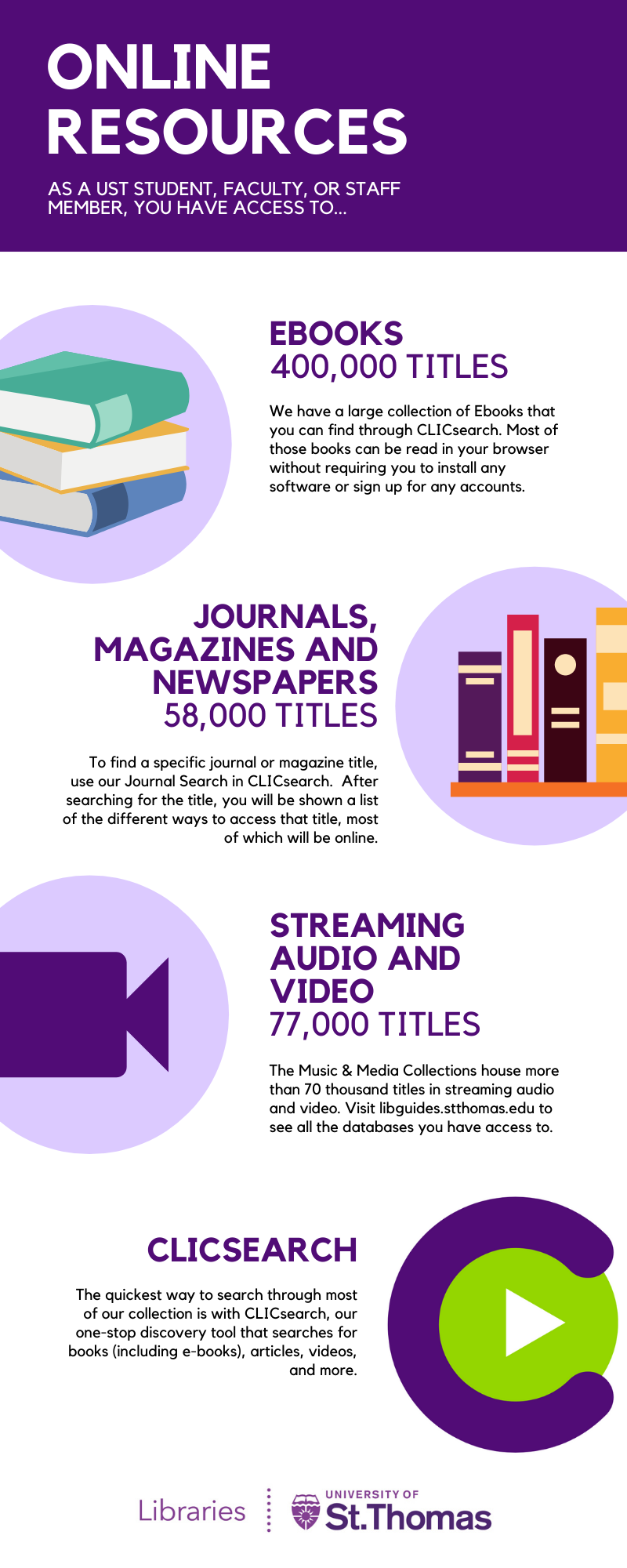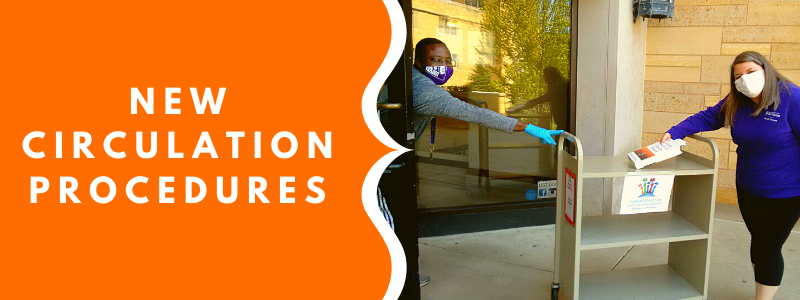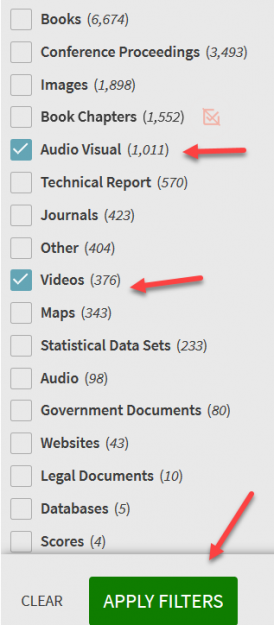
Dan Gjelten, Associate Vice Provost, UST Libraries
The UST Libraries’ strategic plan includes this goal: “Provide greatest access to a variety of print and digital content with reliable and robust discovery systems to support the university’s strategic goals…” Maximizing the value of all the Libraries’ collections to support twenty first century research and teaching practices – global, interdisciplinary and interconnected – is a priority for our Libraries.
In light of that, we (and our CLIC consortial partners) are migrating to a new library management system (what you might think of as “CLICnet.”) On May 31, we will cut over to the new system (called CLICsearch) and pull the plug on the old CLICnet, which we have been using since 2000 (a long time in technological years!)
Over the last three decades, the online library catalog has evolved from an electronic version of the paper card catalog to a system which managed most of the library’s “business” and user activities in a module format: acquisitions, cataloging, searching and circulation. That traditional system became supplemented over the years by additional services which helped us to manage the rapidly growing collections of electronic content.
Our new system moves beyond those moduled silos and is a true example of a “next generation” integrated library system. It takes the library’s technology another step forward by not only connecting library resource management workflows, but by communicating and exchanging information with other campus systems, including course management, identity management, student information, the institutional repository and other data sources. As a cloud-based system, updates and new developments can be handled quickly and remotely by the vendor; and advanced analytics will allow for better-informed, evidence-based library decision-making (in the area of collection development and user services).

The new CLICsearch logo
While the Libraries’ new system provides improved management of acquisitions/purchasing and the inventory control functions that many library users never see, it also includes a very sophisticated search function – the main interface for library users who seek to discover the information they need. We know that today’s library users have no problem finding information, but may have problems finding the right information. CLICsearch attempts to address that need for efficient and effective discovery in an environment of abundant (and largely digital) information. It differs from previous library systems, in part, due to the ways that library collections have evolved in the last decade. While traditional library catalogs have been designed to search and find print materials primarily, CLICsearch is a discovery layer that searches nearly everything (print and electronic) that the Libraries own and manage, regardless of format, including e-books, electronic journals, individual chapters and articles, streaming content, audio and video resources, content in our institutional repository, our digitized special collections, and more. This “unified resource discovery” system is intended to more effectively enable students, faculty and researchers to discover and obtain needed information by connecting the searcher directly to the content, whether in our local collections or owned by our colleagues in CLIC or beyond.
As we roll out CLICsearch, there will likely be bumps (this is a very sophisticated system) but we hope you’ll start to work with it and let us know of any problems you are having. The UST Libraries have three staff who are certified administrators in the new environment and we hope to be able to address any issues fairly quickly. In addition, and significantly, many of the other academic libraries in the state (including the University of Minnesota, St. Olaf, and Carleton) will be on the same system, and we hope that efficiencies, knowledge sharing and collaboration will result in that environment.
Future developments include the more efficient delivery of course materials to students through integration of our course management system and CLICsearch, and that we’d be able to leverage library content for use in courses with the goal of improving student success, not to mention saving them money and saving faculty time.
We are very excited about the implementation of this system, which we think is another example of the ways in which the academic library often leads the way in educational technology. We look forward to the coming years in which as other campus systems get upgraded to “next gen” systems, the UST Libraries and our collections and services will be more deeply integrated into the academic mission.
If you have any questions regarding this development, please contact me at drgjelten@stthomas.edu or use our CLICsearch feedback form.










